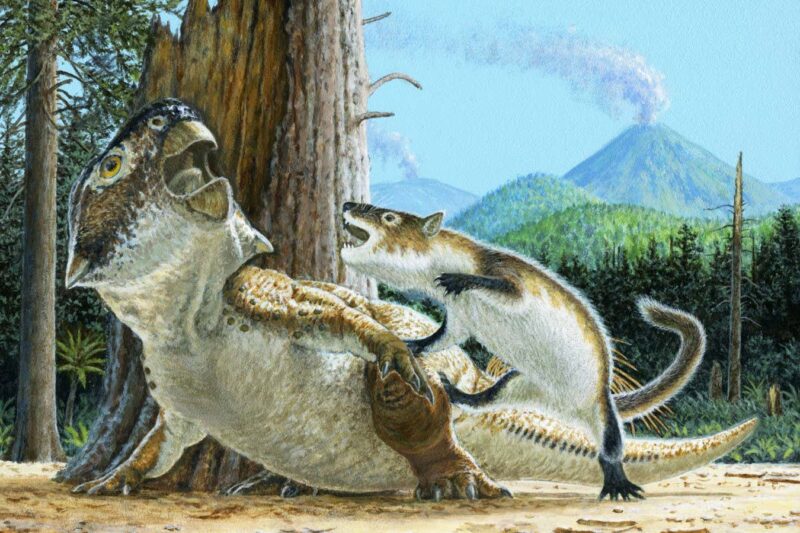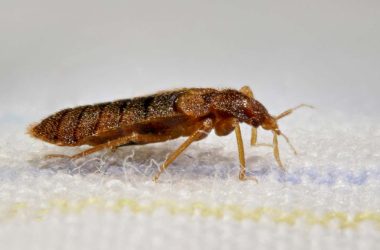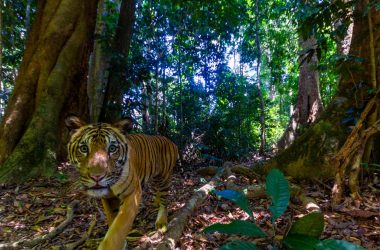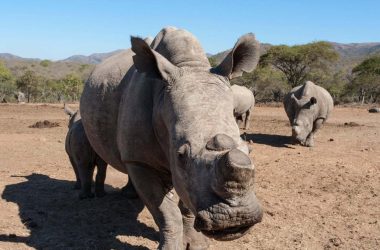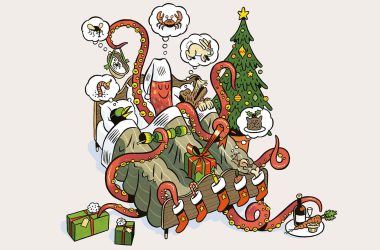Small mammals that lived around 125 million years ago may have preyed on dinosaurs three times their size, a strange fossil unearthed in China suggests.
A handful of fossils from China have shown that mammals from the Cretaceous Period, such as the carnivores Repenomamus giganticus and Repenomamus robustus, may have dined on infant dinosaurs and scavenged dinosaur carcasses.
Now, Jordan Mallon at the Canadian Museum of Nature in Ottawa and his colleagues have described the first fossil that appears to show the cat-sized R. robustus actively hunting a much larger dinosaur.
The fossil, which was discovered in the Lujiatun fossil beds in Liaoning province in China, captures the moment that the mammal seemingly took on Psittacosaurus lujiatunensis, a plant-eating, bipedal, beaked dinosaur – just before the two were buried by debris during a volcanic eruption.
The intertwined skeletons show the mammal with its front paws grasping the dinosaur’s mouth, its jaw clamped down on its ribs and their hindlimbs entangled.
The position of R. robustus on top of P. lujiatunensis indicates that the mammal was the attacker, says Mallon. The lack of tooth marks on the bones of the dinosaur suggests that the mammal wasn’t merely scavenging on its carcass.
“We think that the weight of the evidence rules in favour of the predation hypothesis on the part of the mammal,” says Mallon.
The researchers estimate that, at the time of their deaths, P. lujiatunensis weighed around 10.6 kilograms and R. robustus weighed around a third of that, at 3.4 kilograms.
“The traditional knowledge has been that the bigger dinosaurs ate the smaller mammals, and that’s usually the way it went,” says Mallon. “But what’s so surprising about this fossil is that it suggests, occasionally at least, smaller mammals could take down a larger dinosaur.”
“It’s really a remarkable fossil,” says Nick Longrich at the University of Bath, UK, who wasn’t involved in the study. But he isn’t convinced that it shows the mammal was hunting the dinosaur. “The mammal is a lot smaller than the dinosaur, which might argue against predation. But, as they note, sometimes predators take on much larger prey – wolverines are one of the classic examples.”
Hans Larsson at McGill University, Canada, is also skeptical of this interpretation. “The mammal’s hand inside the mouth of the dinosaur, which had a high bite force, suggests at least the dinosaur was dead at the time of burial or it would have easily sliced off the hand,” he says. “The awkward interlocking legs between the two suggests both were dead or tumbled while being buried. In this case, I think there is not enough evidence to say with full confidence the mammal was the predator caught in the act of subduing its prey.”




